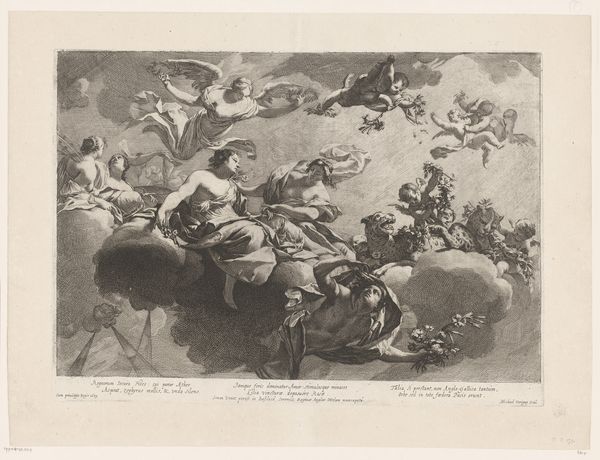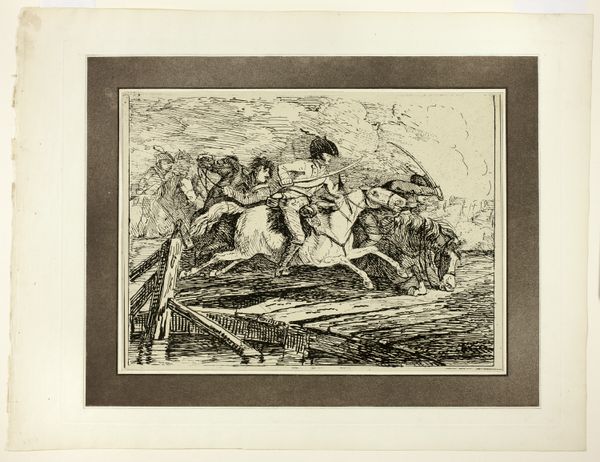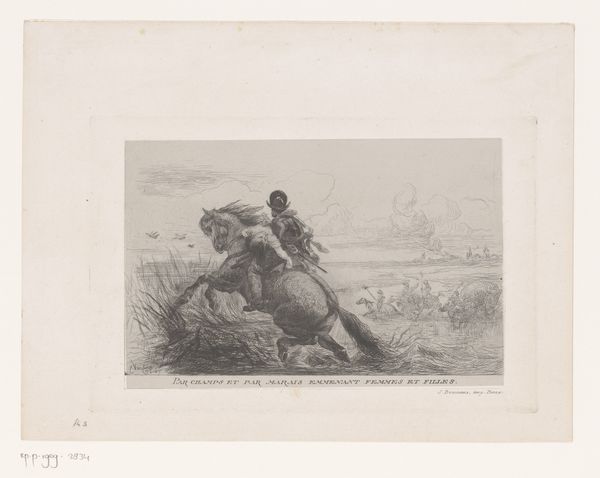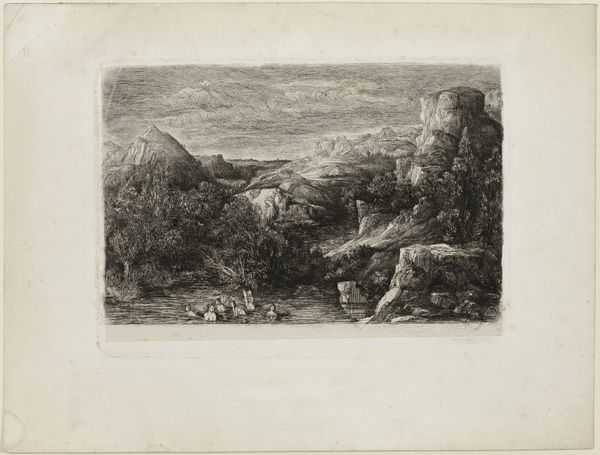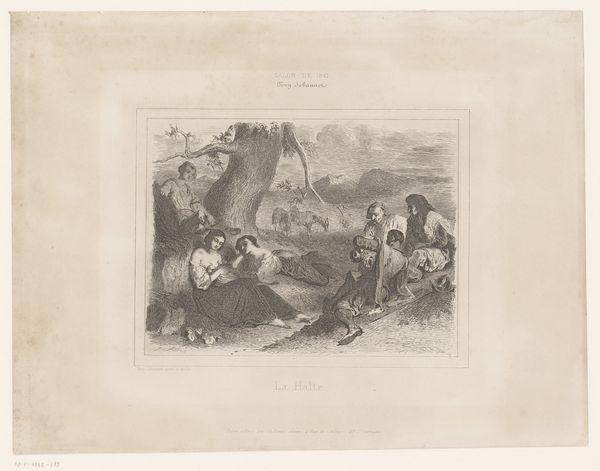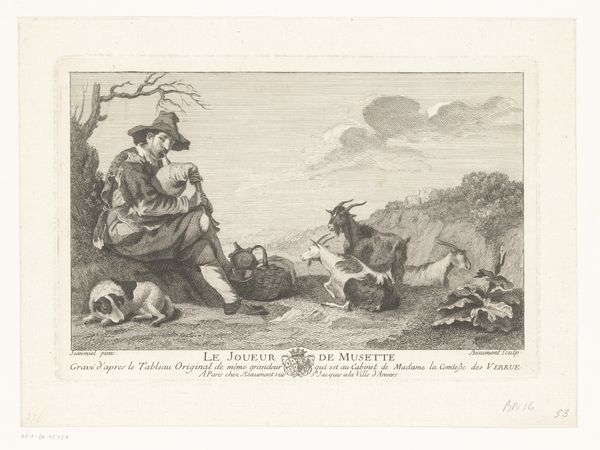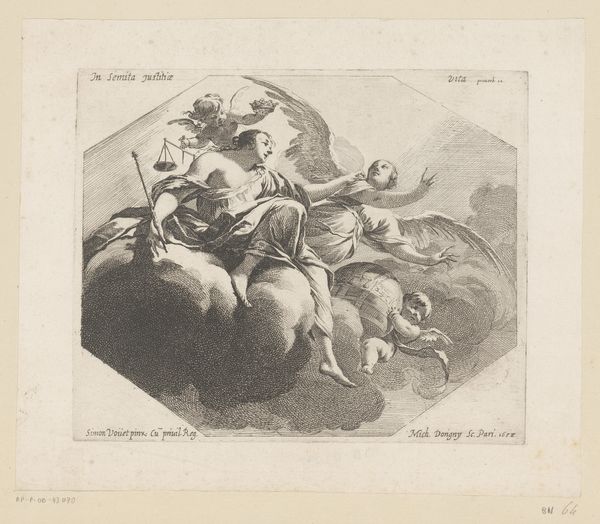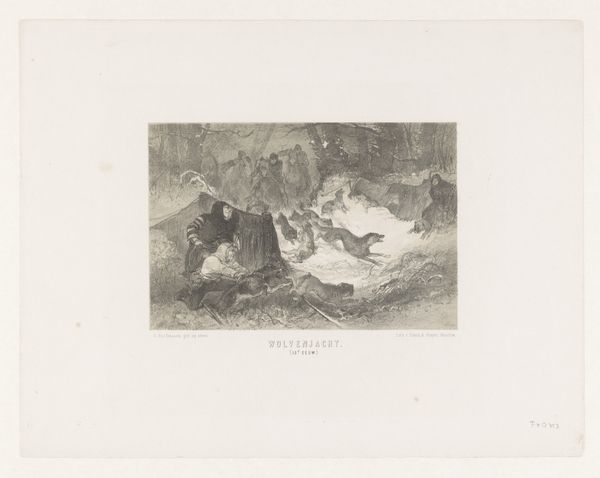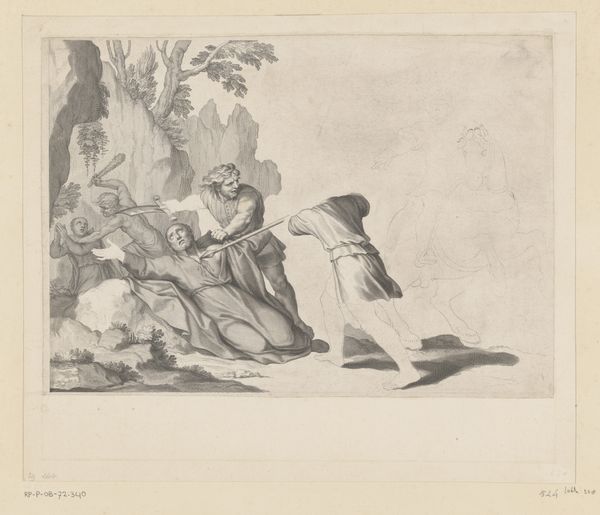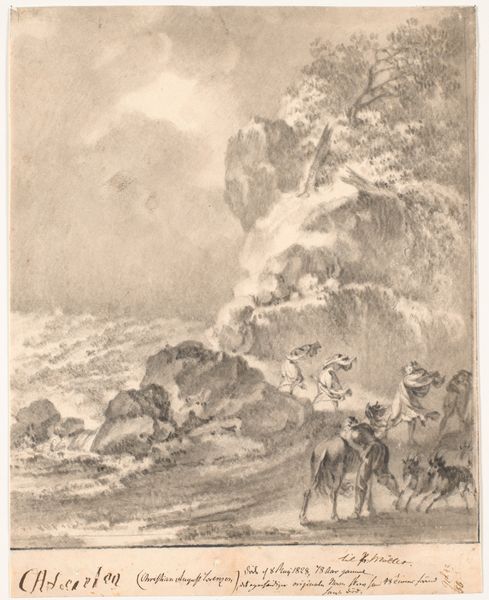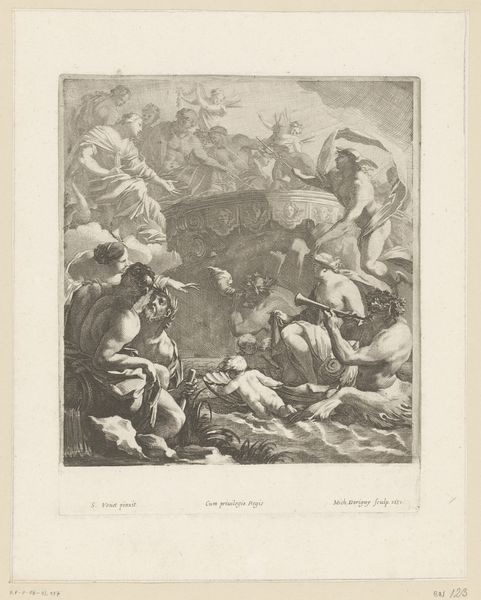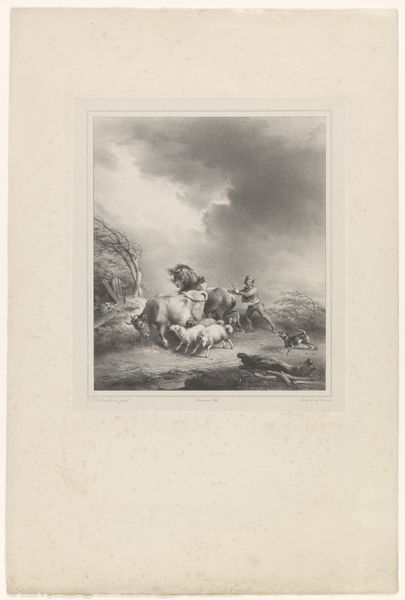
print, etching, engraving
#
allegory
# print
#
etching
#
old engraving style
#
history-painting
#
nude
#
engraving
#
rococo
Dimensions: height 209 mm, width 303 mm
Copyright: Rijks Museum: Open Domain
Editor: We are looking at Christian Bernhard Rode’s "Allegory of the Night," created around 1768-1769. It’s an etching and engraving now held at the Rijksmuseum. I'm struck by the way the artist uses light and shadow; it feels like the forms are emerging right out of the darkness. How would you interpret the composition of this work? Curator: The composition reveals a compelling use of diagonal lines and contrasting textures. Note how the artist directs our gaze from the cluster of cherubs on the left, up the sweeping cloud, and then along the reclining figure of Night to the shadowed right side of the print. Consider the textural interplay between the smooth skin of the figures and the rough hatching used to render the clouds. Does this create a sense of movement or perhaps something else? Editor: I see what you mean. It makes everything look active, dynamic. Even the sky isn’t just background, it has its own energy, an interaction. Does that support the overall meaning? Curator: Precisely. The artist’s mastery of line weight and density builds visual interest. Notice how the foreground cherubs are rendered with darker, bolder lines compared to the more delicate, ethereal lines that define the background. This contributes to a sense of depth, does it not? Editor: Absolutely, it draws you in, focusing your attention where the artist wants it. So, the composition guides the viewer and amplifies the allegory. Thank you. Curator: Indeed. Thinking about the artistic elements underscores how technique shapes our experience and understanding of a work.
Comments
No comments
Be the first to comment and join the conversation on the ultimate creative platform.
